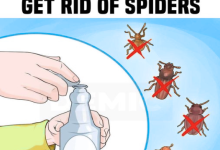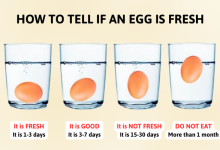There are a few different items that can come in handy if you don’t have a knife sharpener around. This is what we’ll explore now.
A knife sharpener is usually an important utensil to have with you in the kitchen, or perhaps when you’re going camping. Working with a blunt knife is not advisable.

Apart from the fact that it’s uncomfortable and frustrating, using a blunt knife can also be really dangerous. You may use more force than required just to get it to work and can even cut yourself in the process. So, make things safer and easier on yourself by ensuring your knives are always sharp.
No knife sharpeners? Use these instead. To learn how to sharpen the blade of a knife, you have to be willing to get creative. Here are a few ideas:
1. Car window

Let’s say you’re out camping or you have access to your car, the glass on the window can make a good sharpener. All you need to do is to place your knife on the top uncut edge of the glass and adjust the blade so it’s angled towards that edge. Pass the knife through the glass three times ensuring you run the entire length of the blade through it. Turn to the other side of the knife and do the same. Keep going until your knife is sharp.
2. Ceramic mug or plate

Place the mug upside down and you’ll notice there is a portion in the underside that is uncoated. Run the sharp edge of your knife through this side over and over a few times.
3. A nail file

These can make excellent improvised knife sharpeners. Place it on a nice flat surface and run your knife through it until it’s sharp enough.
4. Another knife

If you happen to have two knives, then you can get going with this method. Hold the one that’s serving as the sharpener steady on one hand. Then take the duller one and slide it through the spine of the steady one to sharpen it.
5. A river rock

Yes, you can just use a random stone instead of a sharpening stone, and although an actual sharpening stone will probably give you a better result, using a flat rock can be a very good option if you don’t have one within hand reach.
This method can be very practical since you won’t have to carry anything with you on your backpacking trip.
The key to this is finding a nice, relatively smooth, flat rock to do the job. Lubricating the rock from the water, a common technique when using sharpening stones can possibly give you a better result.
6. A brick

Brick is also one of these everyday things that are quite close to a sharpening stone.
In this method, you use the brick just like a normal sharpening stone – this means that you employ the same movements and techniques as the ones you would use if you were using actual sharpening equipment to sharpen your knife.
A brick is quite easy to find if you don’t have a sharpening stone. The key is to find a brick that is not too rough because bricks that are too rough and too hard will damage your blade. Try to find a ‘fine-grit brick, for an optimal home sharpening of your knife.
7. Your leather belt

Alright, this one’s a bit different from the others. You should use a belt or some kind of leather strap even if you want to sharpen your knife properly, with sharpening stones and all.
The belt comes into the stropping phase of the sharpening process, to remove the burr created by the honing step on the blade of the knife.
However, if your knife is sharp and you want to keep it sharp but don’t have anything else than your leather belt on you, I would suggest using that as your maintenance sharpening method.
If you do this regularly enough, you could potentially keep your knife sharp much longer than usual.
Of course, this trick could work better with a rougher belt. I would also recommend using an old belt or any old leather strap.
8. Sandpaper
In this method, you use the roughness of the sandpaper to sharpen your knife. Sandpaper has a similar roughness to sharpening stones and is a good short-term solution if you don’t have any handy sharpening equipment.
Trick: Mount the sandpaper on a block of wood that has a flat surface. This can be a good improvised sharpening stone.
Keeping your knife sharp

To prevent needing to run to your knife sharpeners quite so often, keep these tips in mind to ensure your knife stays sharp for as long as possible.
According to Sharpeningsupplies, make sure you use the right cutting board, clean your knives and store them properly. Avoid leaving them in a drawer where they can get banged up and dulled.
A sharp knife leads to a comfortable kitchen process. And as you can see, these DIY knife sharpening hacks will only require you to get a little creative with what you do have around. Have you tried any of these methods before? Which one worked well for you?







